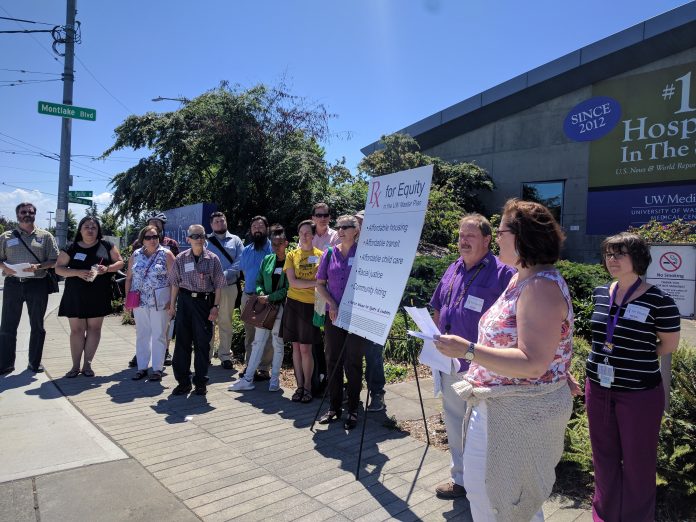The University of Washington (UW) released the final details of their campus master plan on Wednesday. As reported in earlier coverage, the UW expects to see 20% growth in students, faculty and staff over the next ten years. This growth will have large impacts on the university and the surrounding community, requiring the comprehensive planning outlined in the report.
Study Background
The University releases this report periodically in order to change what can be done on campus. The plan looks at the next ten years in order to estimate what the UW campus will need and then plan out how those needs will be met. The last time UW completed a master plan was in 2003 and enough has changed since then to require a new plan. The recently released document looks at the next ten years and predicts significant growth. It then guides how that growth will happen on campus. Now that the university has finalized the plan, it will go to the City of Seattle, specifically the Department of Construction and Inspections, for authorization, for review and recommendation. If the plan is approved by the City Council, it will guide what can be done within the area designated as a Major Institutional Overlay (MIO). This designation covers most of the UW campus north of the Ship Canal. Rather than being completely subject to common zoning, such as commercial, single-family, or industrial, this overlay provides unique requirements and opportunities for the campus area.
A Brewing Controversy
The study is largely an attempt to identify and mitigate negative impacts from campus growth and the study acknowledges as much, “the CMP planning process is intended to foresee, assess, and outline mitigation measures for the potential direct, indirect, and cumulative impacts of long-term development.”
Nearly everyone involved agrees that the campus growth will have huge positive impacts but disagreement is found in how to manage some of the negative impacts. The master plan process attempted to identify and mitigate potential issues through a public comment period last year, summarized in the plan’s appendix. These efforts didn’t make everyone happy.
A group called Campaign For Responsible UW held a press event on the same day the final plan was released with their own report, highlighting problems they saw.
Areas Of Disagreement
The Campaign for a Responsible UW is largely working to reduce the burdens on students, faculty, and staff. They’ve identified four topics that they think UW could do better on, transportation, housing, childcare, and open space. Emily Sharpe, a UW employee, said “I spend somewhere between $2,000 and $3,500 a month for childcare.” While the UW has a program to assist with this burden, Sharpe indicated that there is only room for about about 2% of the employee infants.
Pamela Honegger highlighted the related problems of transportation and housing. Her commute is a mix of driving, walking, and light rail and on a normal day takes her 80 minutes. She can’t afford rents in Seattle and said, “I believe it is the UW’s responsibility to help employees afford housing.” Honegger’s long commute is a function of high housing costs around the campus and limited transportation options. The campus master plan doesn’t do much to solve the housing crisis near campus but it does tout the U-Pass program, a subsidized transit pass for employees, staff, and faculty. However, the U-Pass program isn’t free from criticism either. The Campaign For A Responsible UW indicated the pass costs have increased dramatically over the last ten years and many other employers, including King County, offer entirely free passes to employees. The UW also appears to subsidize parking more than transit and has fought efforts to tax parking.
Sally Clark, a former city councilmeber, responded to a request for comment by saying, “you won’t find any disagreement that affordability in this region is as much a challenge for UW employees as any other employees.” She also indicated that the university has pledged to double the number of childcare slots, is working on improving the U-Pass program and would be making an announcement later this summer regarding housing affordability.
Next Steps
The master plan has to be approved by the department of construction and inspections. The Campaign For A Responsible UW hopes to raise enough awareness to influence this decision and bring about more commitments from UW. Barring any major delays, approval of the plan could happen as early as late summer or sometime in the fall.
Editor’s Note: The original article indicated that UW subsidizes parking more than transit. On closer inspection, it’s not clear what the subsidy breakdown is and that note has been amended.
University of Washington’s Draft 2018 Seattle Campus Master Plan

Owen Pickford
Owen is a solutions engineer for a software company. He has an amateur interest in urban policy, focusing on housing. His primary mode is a bicycle but isn't ashamed of riding down the hill and taking the bus back up. Feel free to tweet at him: @pickovven.


